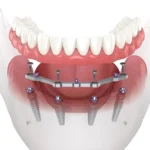
Knee Walkers vs. Crutches
Knee walkers and crutches are two common mobility aids used by individuals who have suffered an injury or undergone surgery on their foot, ankle, or leg. Both of these devices provide support and balance while walking, but they differ in terms of design and function. In this article, we will discuss the differences between knee walkers and crutches to help you make an informed decision about which one is better suited for your needs.
Design and Function
Knee walkers, also known as knee scooters, are four-wheeled devices that have a padded platform for the injured leg to rest on. They have handlebars for steering and brakes for control. The design of knee walkers allows individuals to rest their injured leg comfortably while moving around, reducing strain on the affected area. If this is something that you are looking for, then knee scooters in Atlanta may be the better option. You just have to make sure that the height of the knee walker is adjustable to fit your body properly.
On the other hand, crutches are two long sticks that individuals use to support their body weight while walking. They require a certain level of arm and upper body strength for proper use. Unlike knee walkers, crutches do not provide any support for the injured leg and require more effort and balance while in use.
Benefits
Both knee walkers and crutches offer benefits to individuals with mobility issues, but they differ in terms of the benefits they provide. For instance, knee walkers allow individuals to keep their injured leg elevated and prevent it from bearing any weight, which can be beneficial for those with injuries or surgeries on the foot or ankle. They also require less effort and energy compared to crutches, making them a more suitable option for individuals with limited upper body strength.
On the other hand, crutches provide more stability and balance while walking compared to knee walkers. They also promote better posture and muscle use as they require individuals to bear their own weight while using them. In addition, understanding walker vs rollator can further help with decision-making as both devices serve different purposes.
Limitations
Both knee walkers and crutches have their limitations. Knee walkers are not suitable for individuals with injuries or surgeries above the knee, as they provide support only for the lower leg. They may also be difficult to maneuver in small spaces and uneven terrain. Crutches, on the other hand, require a certain level of physical strength and coordination, which can be challenging for some individuals to use properly. They may also cause strain on the arms and shoulders with extended use.
Conclusion
Both knee walkers and crutches have their own unique characteristics and benefits, making them suitable for different individuals depending on their needs. It is important to consult with your healthcare provider to determine the benefits of knee scooters for enhanced mobility and the most appropriate mobility aid for your specific injury or condition. Whether you choose a knee walker or crutches, the ultimate goal is to aid in your recovery process and provide support while walking until you are able to do so on your own again. So, consider all aspects carefully before making a decision, and be sure to follow proper instructions for safe use. Keep pushing through your recovery journey with the help of these mobility aids!


















